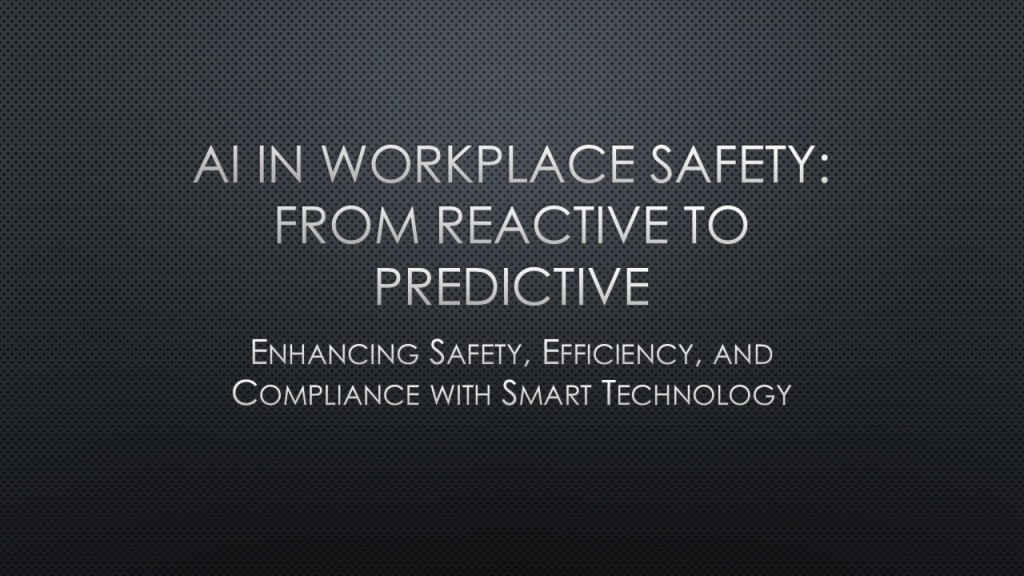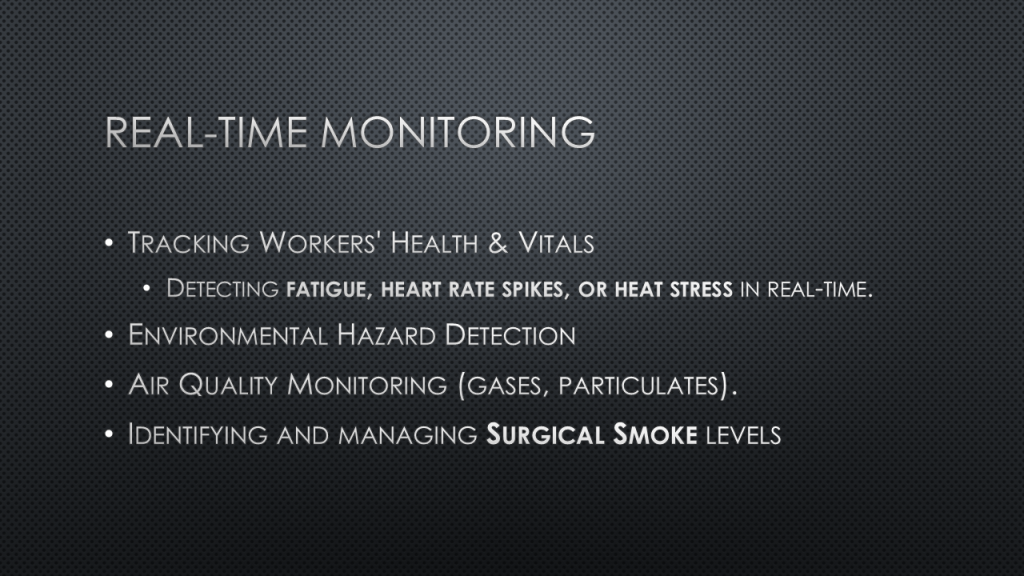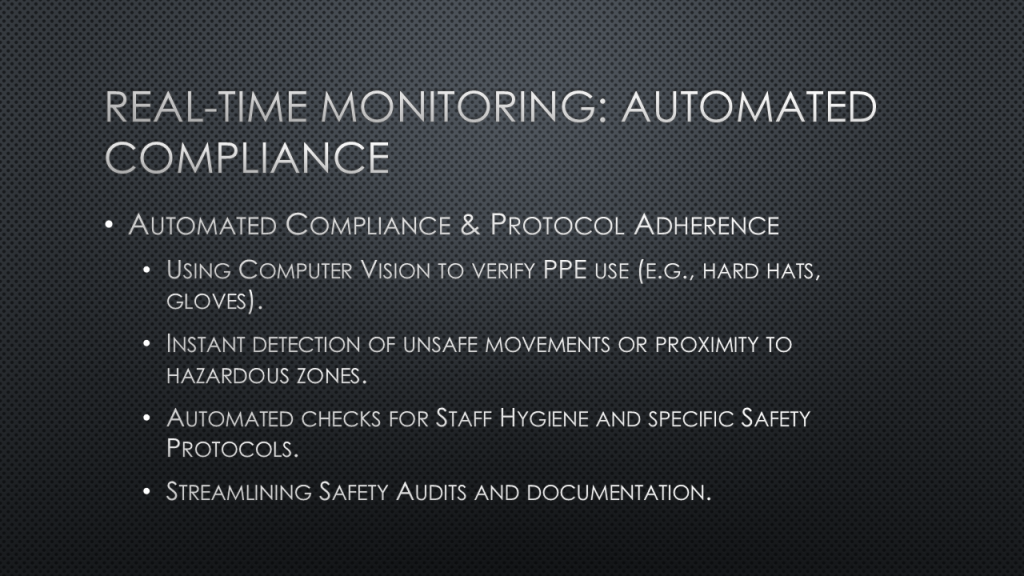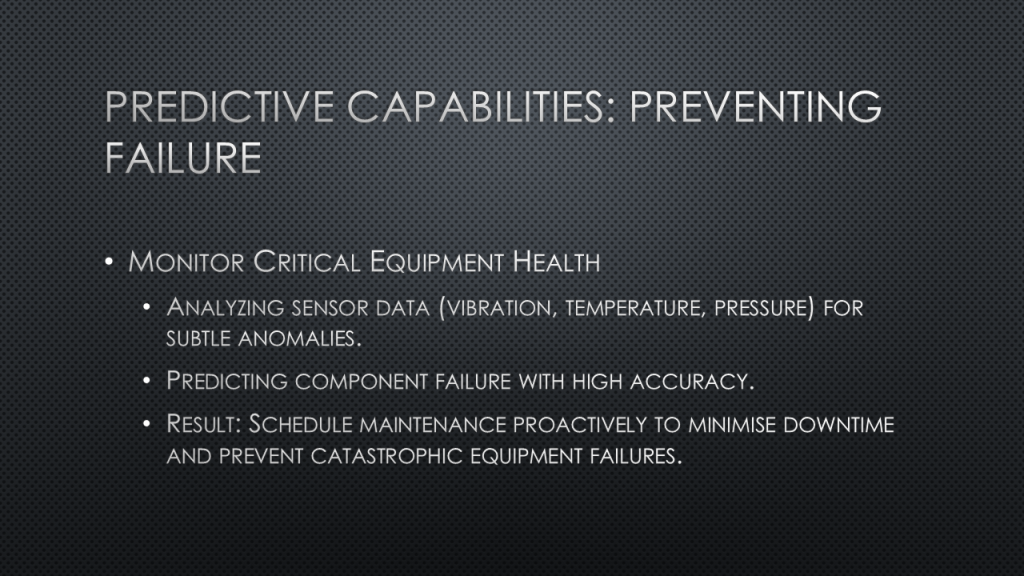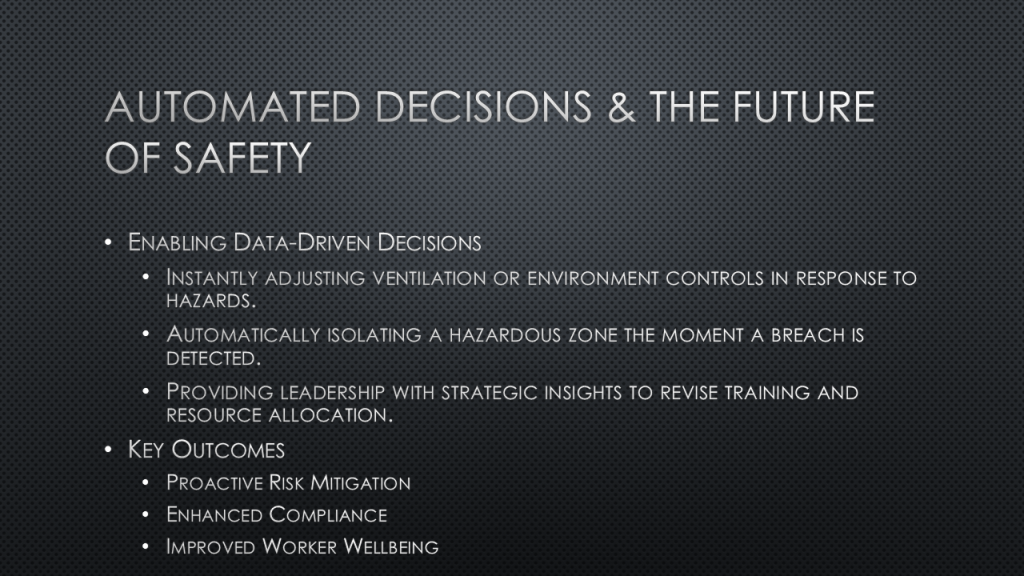A Smarter, Safer Workplace: How AI is Changing the Game
Workplace safety is getting a major upgrade, and it’s all thanks to artificial intelligence (AI). For years, keeping people safe on the job meant relying on old-school methods: manual checks, looking at past accident reports, and reacting after an incident has already happened.
But AI is flipping the script. Instead of just reacting, it’s allowing companies to be proactive. By using real-time monitoring, predictive capabilities, and automated decision-making, AI helps spot potential dangers before they can cause harm.
Think about it this way: AI can analyse massive amounts of data in the blink of an eye, helping companies see risks that might otherwise go unnoticed. This is a huge deal for high-risk industries like healthcare, where safety isn’t just a priority—it’s everything.
Practical Examples of AI in Healthcare
Wearable Sensor and Tracking devices can monitor staff. Monitor fatigue levels based on:
-
- Motion
- EEG
- PPG
- ECG
- GSR
- EMG
- Skin Temperature
- Eye Movement
- Respiratory Data
These data can be compiled and analysed by the system to send an alert if a staff is fatigued or nearing fatigue. Fatigue impairs cognitive and motor ability. It raises the risk of injury as well as reduces productivity.
The facilities and environment can also be monitored by AI. Cameras and sensors in the operating room are able to check for hazards and alert staff if critical levels have been breached.
AI can also do observational analysis that can interpret video footage to identify unsafe behaviours such as neglecting protective gear. Workers can receive personalised feedback tailored to their safety performance.
Predictive Capabilities
Staff safety equipment can be monitored and analysed if they’re being used. For example, a hospital purchases scalpel blade removers. These are dispensed to different departments and based on their historical data, the system can predict:
- When to order again
- Which department is using and being compliant with sharps safety
- Which department isn’t
- Automatically flag the department that isn’t in compliance with sharps safety.
- Automatically give recommendations for training, give feedback, and send a report for their safety performance.
We can see how Artificial Intelligence is fundamentally changing workplace safety by shifting the approach from reactive to proactive risk management. AI uses predictive analytics to analyse vast amounts of historical safety data and real-time information from sensors and cameras to identify patterns and predict potential hazards before they lead to an accident. Systems can monitor the work environment and employee behaviour, issuing instant alerts for unsafe actions or the lack of required protective equipment. Furthermore, AI automates routine compliance tasks and reporting, streamlining safety protocols and freeing up human safety professionals to focus on higher-level risk mitigation and culture building.
This integration of smart technology ultimately leads to fewer accidents, improved compliance, and a generally safer working environment for employees across industries. If you’d like to know more about AI in workplace safety, please contact us at hello@qlicksmart.com and we can discuss with you about the future of staff safety.


